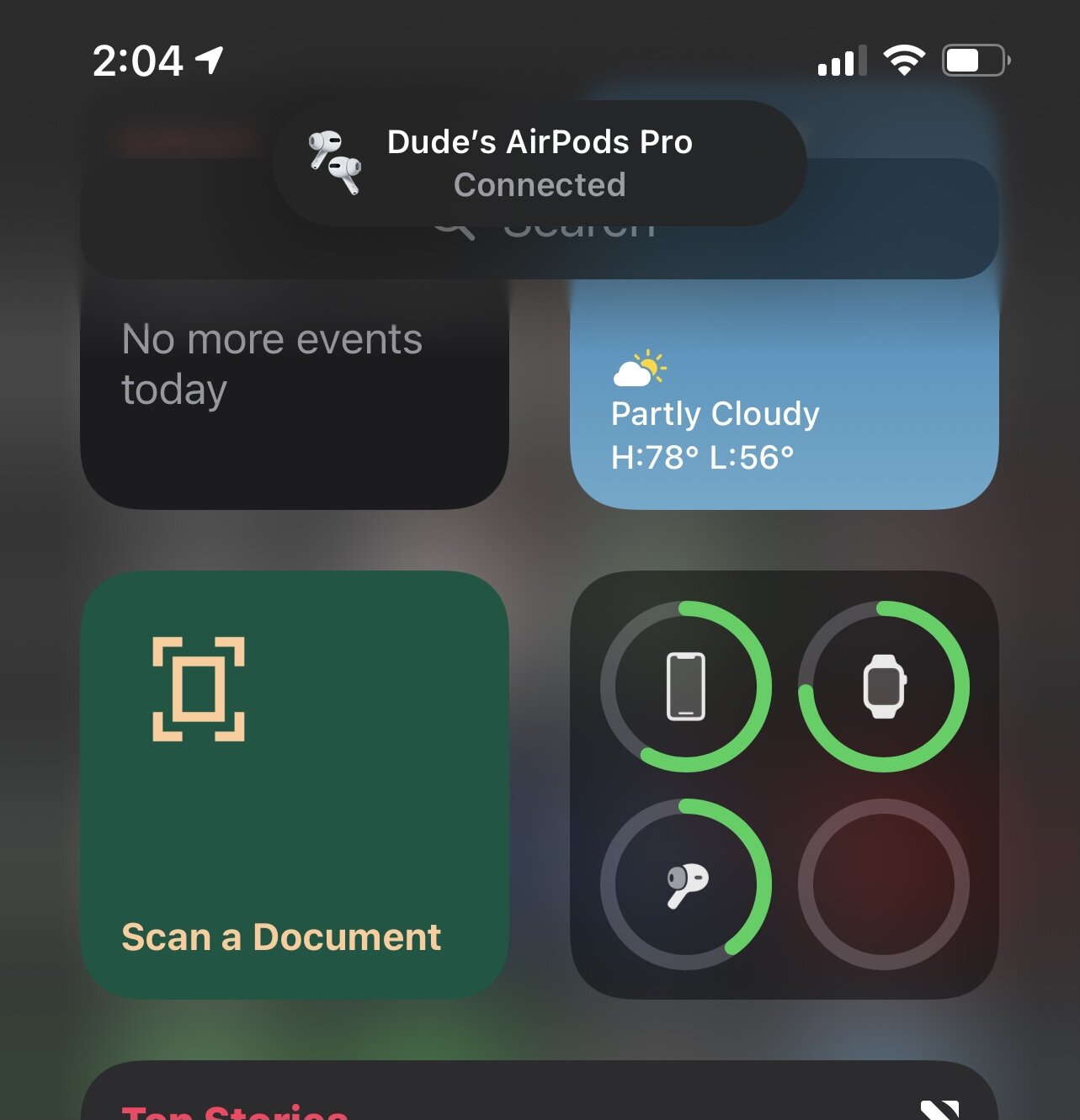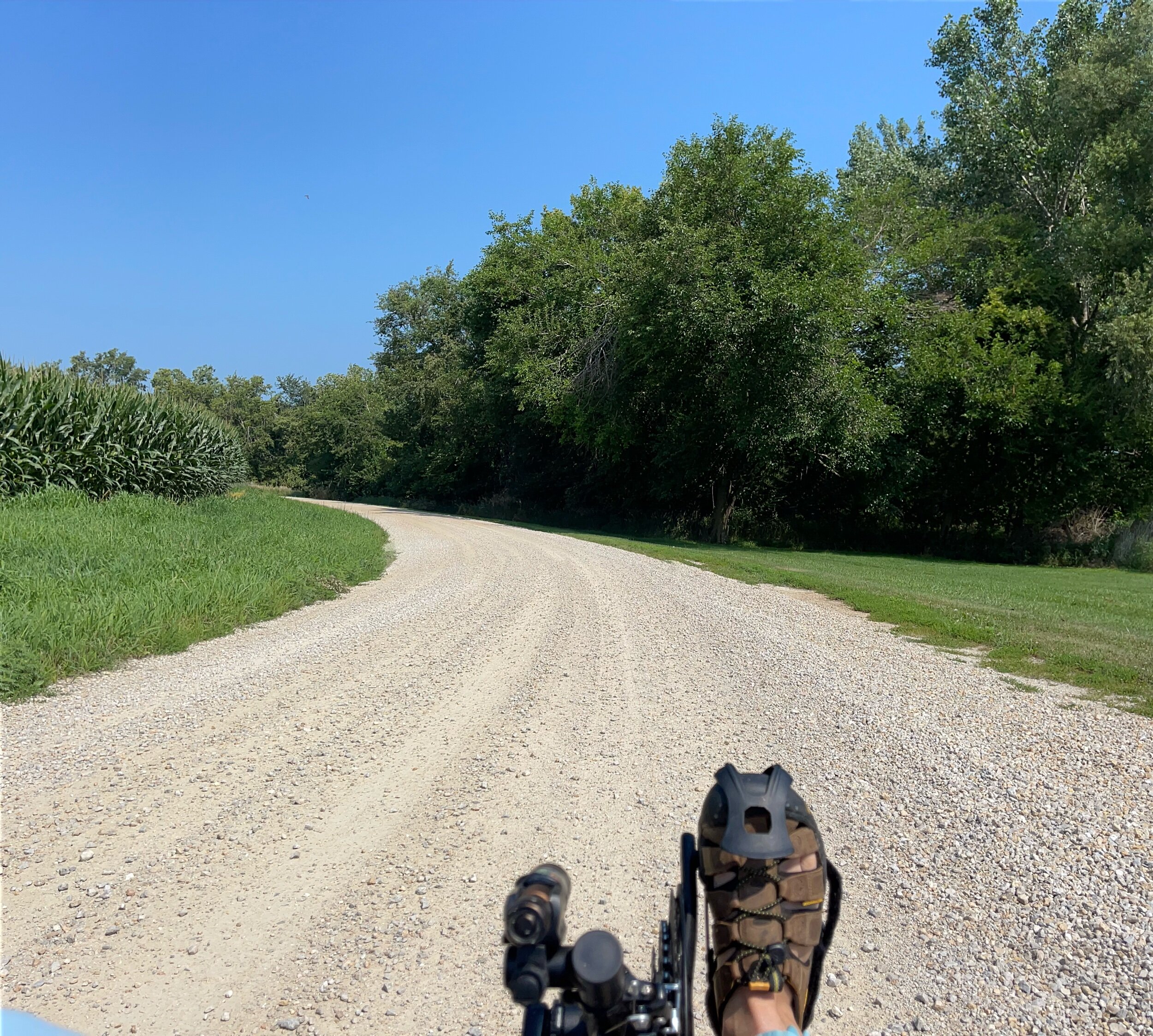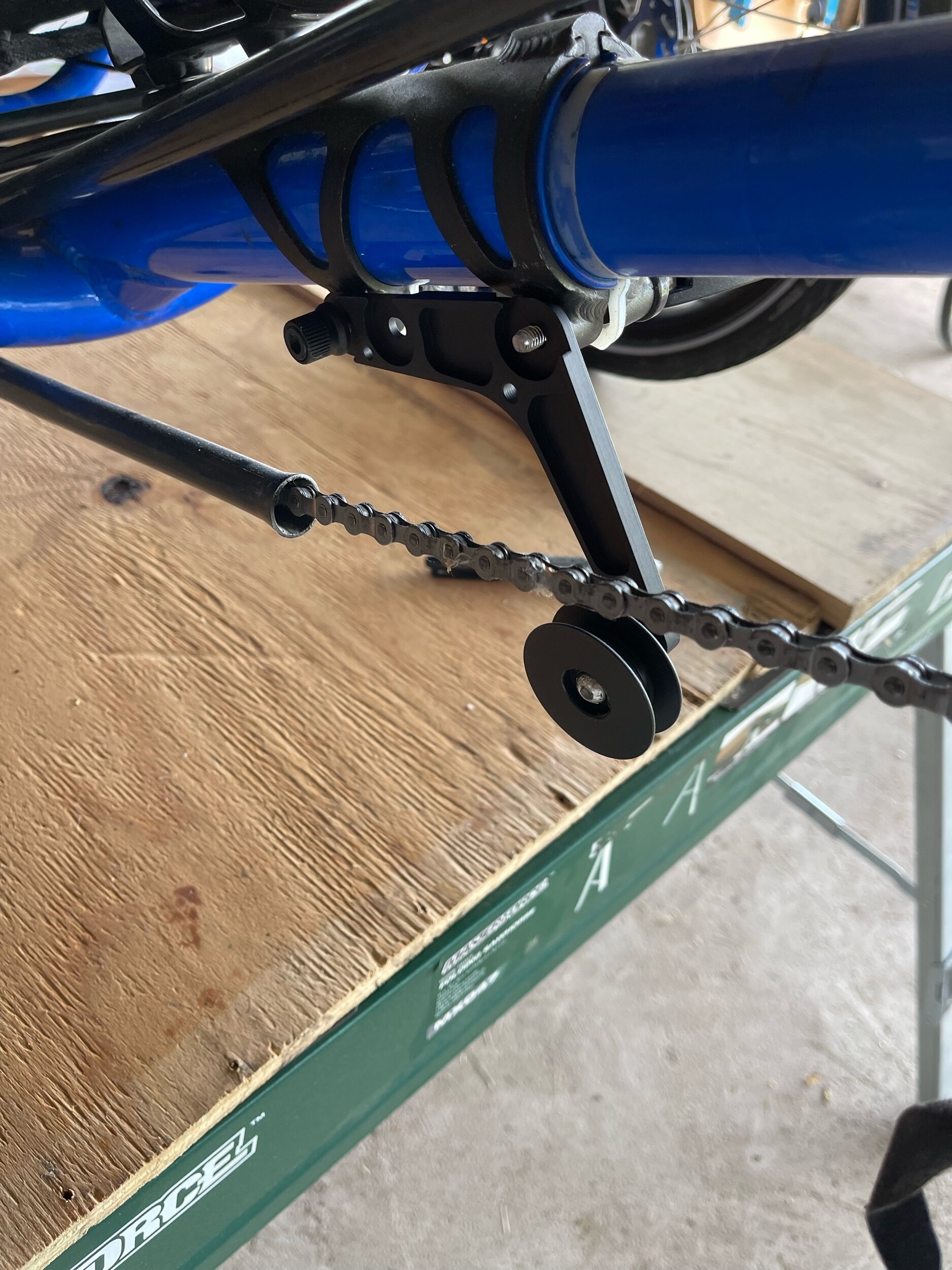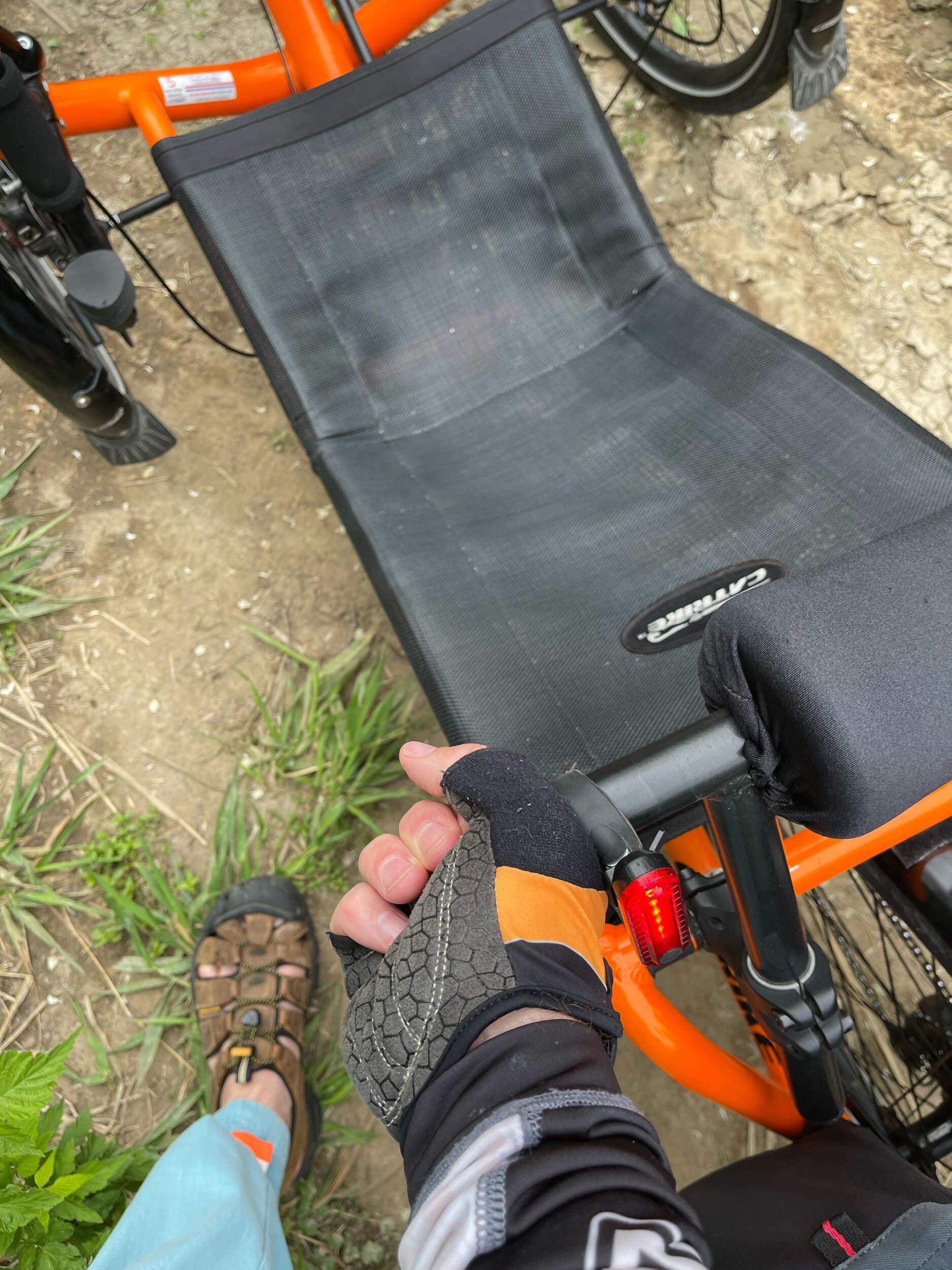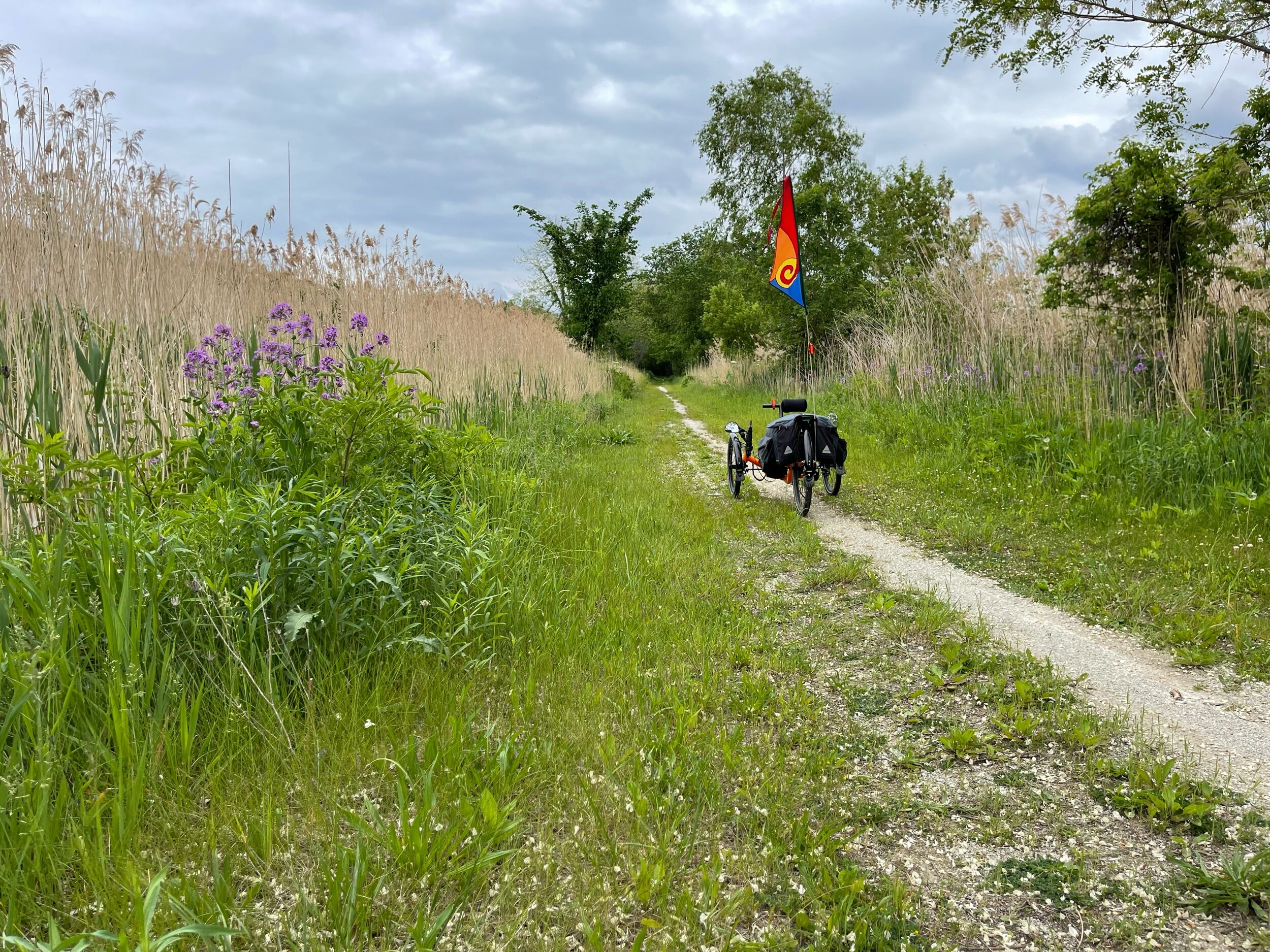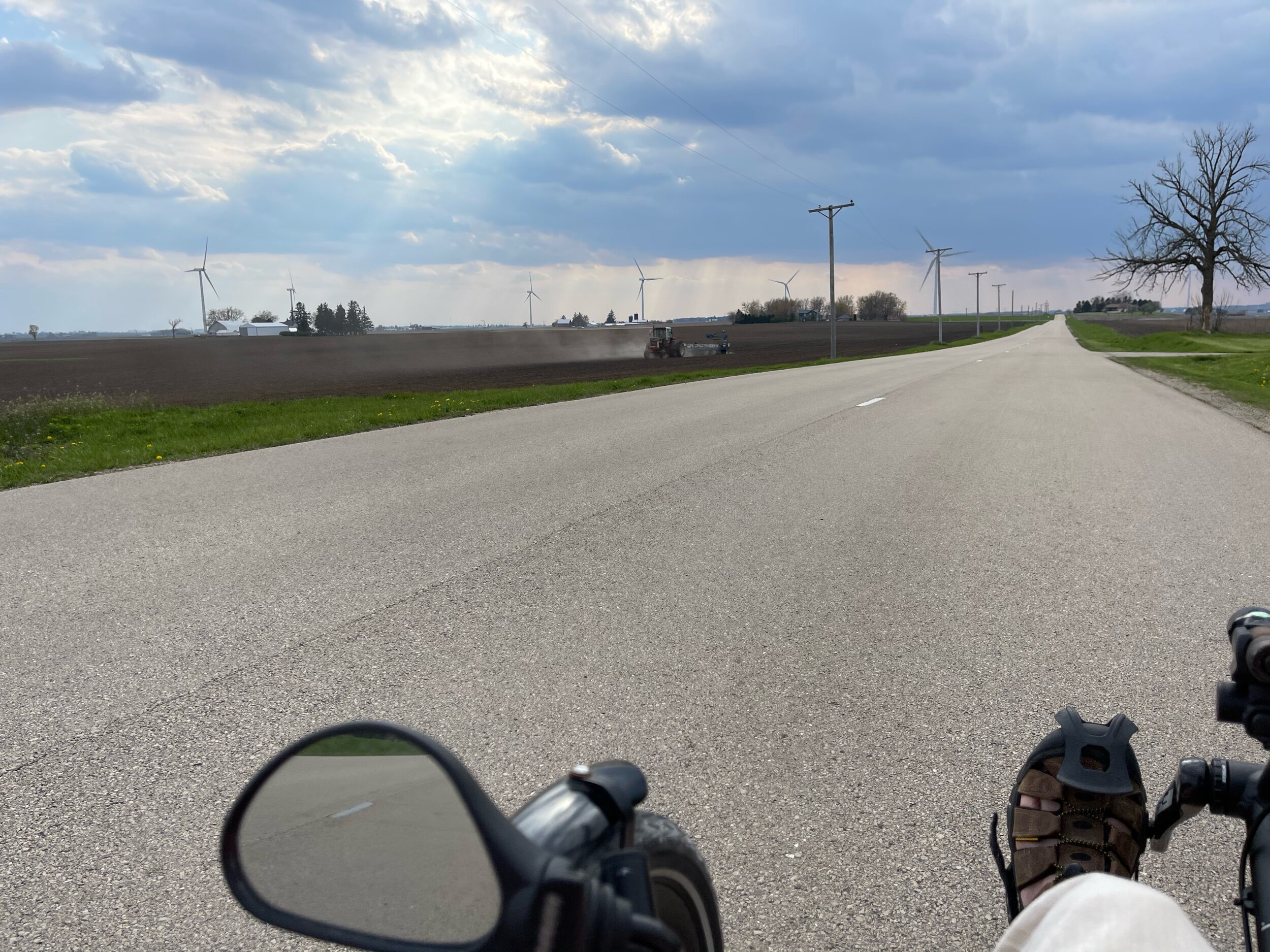As I work towards longer distance rides, one of the things I’m also putting to the test is my supporting equipment. Like many people nowadays my iPhone sits in as my cycling computer. I use Cyclemeter with the phone’s GPS to track my rides in terms of speed, distance, and elevation changes.
I have my iPhone paired with a set of AirPods Pro, which allows Cyclemeter to provide audible alerts at pre-set intervals - for me currently, 15-minute and 10-mile intervals. This is a handy feature in multiple ways. It allows the screen to be turned off, but for you to still get periodic alerts on your progress and status. This means that you can leave the screen off to preserve battery and - for the folks that don’t want their phone in front of them when riding, they can toss the phone itself into a pannier bag or backpack and still get updates. I like to have the screen lit up for routine feedback, but I still find the alerts helpful as regular markers for where I’m at on a ride, both in terms of time and distance.
The overwhelming majority of the time when I’m riding this setup also serves the role of providing entertainment. This typically takes the form of either podcasts or audiobooks. While I do enjoy music, for safety reasons I only ride with one AirPod in, on the right side, keeping the left open for the sound of approaching traffic. The immersive nature of music would really need both ears filled, and that’s a no-go for me. But the spoken audio entertainment works quite nicely in this format. And the Cyclemeter alerts pause the other audio when they come through, usually pretty seamlessly. One moment you are listening to a conversation between Enoch Root and Daniel Waterhouse, and the next you are getting an update on your ride time, average speed, etc, before being dropped right back into the conversation.
Historically, the downside to using an iPhone as your cycling computer is that, particularly on longer rides, the battery has not been able to keep up. To compensate for this over the years I’ve used portable battery packs - starting years ago on my Cannondale SR400 and, when I moved to trikes, setting up systems both on my Pocket and later on the Expedition. These work well, overall, but they do involve some extra weight and finding ways to run and secure cabling through the body of the bike or trike (especially true for the Pocket, where I mounted the battery, with a solar panel on it, on the rear cargo tray).
As mentioned, I do already have a setup for this on the Expedition, which is my current everyday ride. But when I upgraded to the iPhone 12 Pro Max last year, I started to notice that it was routinely getting through the entire day without needing to be charged. And to be clear, in my case, a typical day would involve charging the phone to 100% overnight, and then using it throughout the day for phone calls, video meetings, messaging and email, and playing music, as well as being used in the bike computer role for at least a short daily ride. What I was finding is that I would get to the end of that day, getting ready to plug it in at bedtime, and still have a 30-40% charge on the phone.
This may not be entirely surprising - the phone I’m using is Apple’s largest phone, which means a bigger battery, and they made an active (and somewhat unusual, for them) decision to make it a bit bigger and heavier than the previous version to allow for still more battery. Still - I’ve had a plus-size version of the iPhone since that option first became available, and I still needed to carry the battery pack for long rides.
Seeing the improved battery life, I decided to test it out as I started building out distance. In the past couple of weekends I’ve ridden out to longer distances and, more relevant for this experience, longer duration rides. On these rides I’ve set the phone up essentially as I’ve described above - mounted in front of me on its holder in the trike, fully lit up, driving the AirPod in my ear, and playing an audiobook or podcasts pretty much non-stop throughout the ride. I use my Apple Watch as a control for Cyclemeter on the phone, but all of the actual ride tracking is done on the phone itself. Charge at start was at or near 100% (e.g. it had been off the charger since I woke up, but was not used much prior to the ride).
I ran two tests of this particular setup. The first was a 43.22 mile ride which, at an average of 13.72mph, came out to 3 hours, 9 minutes of riding time. The ride also included a break or two coming out to 18 minutes of stopped time. I leave Cyclemeter running during the breaks, but I do often stop the podcast from playing during the breaks, depending upon what I’m doing. Sometimes the breaks involve taking pictures. Where was the phone battery at the end of the ride? Well:
It ended up at about 60% charge by the end of the ride. The AirPod itself had a little less than 50% left, but this wasn’t a test of the AirPods - I already know that, at continuous usage they max out at about 3 1/2 hours. Part of the reason I stop the podcast at breaks - particularly snack breaks - is because then I can put the AirPod into its charging case for a few minutes. This is usually enough to extend it out for quite some time.
The second test was longer - 48.89 miles at an average of 13.54 miles, for 3 hours, 36 minutes of riding time. This ride also included an extended break of almost 37 minutes - I was experiencing some lower back pain, so I stopped at a cemetery along the way to give my back a break. I did pause, but did not stop, Cyclemeter, so it wouldn't register the side trip to the cemetery, because I didn’t want that to be logged into the ride. However, I also took several pictures while there, so the phone was actively engaged the entire time. The result:
As can be seen, by the end of this ride the phone is at about 50% charge. Essentially, this means with over four hours of continuous, active use, it still has half of the battery available. This would suggest that, at my riding speed, with this setup, I could probably get out to nearly eight hours before running the phone down to dead. This would mean that, if I could maintain a similar pace over the entire distance (for which there is, frankly, no guarantee), the iPhone on a full charge could possibly last for nearly the entirety of a century ride. And, of course, that possibility comes more into reach if I shut down the screen and just went to using the audio alerts and the secondary display on my watch (and now I’m sort of curious what that would offer for battery life. May have to test that out…).
This is all the more impressive to me because, as I’ve mentioned, I’ve had several versions of the plus-sized iPhones, and I’ve always had to use a backup battery to ensure they make it through longer rides. I might still bring along a battery pack for those longer rides - they also work to charge up lights and such, so it’s nice to have that option. But it’s looking less and less necessary all the time…

